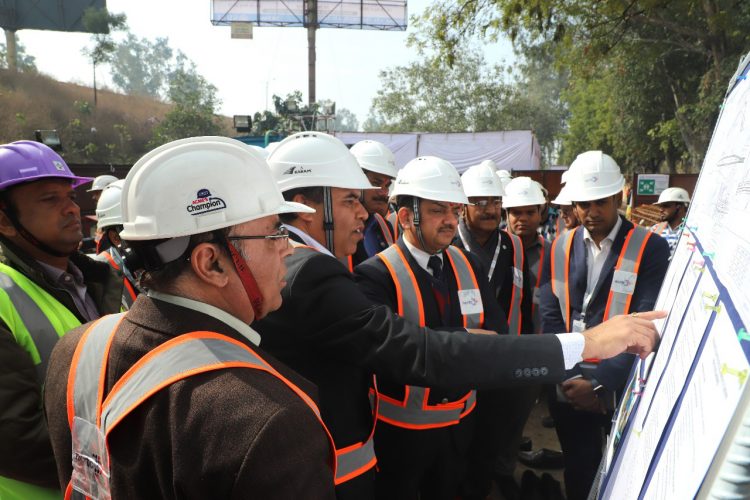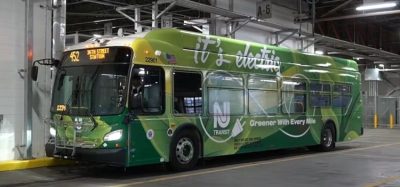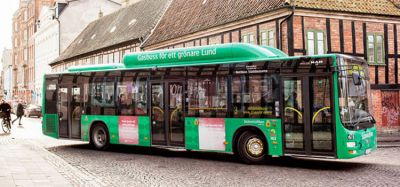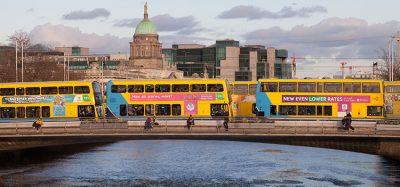Connecting India’s National Capital Region
- Like
- Digg
- Del
- Tumblr
- VKontakte
- Buffer
- Love This
- Odnoklassniki
- Meneame
- Blogger
- Amazon
- Yahoo Mail
- Gmail
- AOL
- Newsvine
- HackerNews
- Evernote
- MySpace
- Mail.ru
- Viadeo
- Line
- Comments
- Yummly
- SMS
- Viber
- Telegram
- Subscribe
- Skype
- Facebook Messenger
- Kakao
- LiveJournal
- Yammer
- Edgar
- Fintel
- Mix
- Instapaper
- Copy Link
Posted: 13 December 2019 | Shri. Vinay Kumar Singh - NCRTC | No comments yet
Population growth in India has led to cities that are buckling under the weight of demand for services. To avoid the overpopulation, many families are moving outside of the cities, but from there, another problem arises: how do they then move around? Shri. Vinay Kumar Singh, Managing Director of NCRTC, explains how this rapid urbanisation has forced India to rejuvenate its public transport offering to ensure that these people are just as provided for as those within the cities’ central business districts.


Urbanisation is a global phenomenon and India is no exception to this population shift, primarily due to the evident disparity in rural-urban opportunities. The growing aspirations of the country’s citizens force around 25-30 people to migrate1 every minute from rural areas to cities in search of better opportunities. The national census in 2011 counted 139 million people as domestic migrants in the country between 2001 and 2011. The future is no less challenging for India, with the national economic survey of 2017-18 predicting that about 40 per cent of India’s population will be living in cities by 20302. This is further acknowledged by the United Nations in its World Cities report, which has estimated that urbanisation levels in India are expected to gradually increase from the current 32 per cent to 50 per cent in 20503.
This influx of domestic migrants is predominantly to Indian megacities like New Delhi, Mumbai, Bengaluru and Hyderabad, primarily because they are the sectoral hubs driving the economy’s meteoric growth. This trend of domestic migration, particularly in New Delhi, has led to uncontrolled urban sprawl, posing serious challenges for infrastructure, environment and citizens’ quality of life, constraining economic growth.
Planned growth of existing economic hubs and the development of new economic epicentres will be critical to sustainable polycentric urban development for realising the prime minister’s vision to make India a $5 trillion economy by 2025.
National Capital Region (NCR)
The National Capital Region (NCR) of India encompasses several districts adjoining New Delhi in the States of Haryana, Uttar Pradesh and Rajasthan, with New Delhi at its centre. NCR is one of the largest urban agglomerations in the world, formed in 1985 in line with the internationally adopted approach of regional planning to decongest New Delhi by enabling holistic development of the region.
Until now, the NCR has undergone lopsided development with a few satellite cities of New Delhi emerging as business hubs, while other sub-regions continue to struggle. This unicentric development has prevented the region from realising its true economic potential. A report by Oxford Economics has projected NCR’s GDP to hit $1 trillion by 20304.
This trend of domestic migration, particularly in New Delhi, has led to uncontrolled urban sprawl, posing serious challenges for infrastructure, environment and citizens’ quality of life, constraining economic growth
With an average 33 per cent decadal growth, the population of NCR is expected to reach approximately 64 million by the year 20215, while New Delhi is set to overtake Tokyo to become the world’s most populous city by 20286. The lack of planning and uncontrolled urbanisation in NCR in general, and Delhi in particular, has resulted in serious issues of over-stressed civic amenities, severe congestion, a high number of road accidents and hazardous pollution levels.


Regional mobility in NCR
Despite the augmentation of new roads, flyovers and expressways, traffic congestion has continued to plague the NCR unabated. Plans for transport arteries that create enhanced regional mobility serving the aspirations of NCR have become critically important for sustainable development.
Worldwide in extended urban agglomerations around cities like Seoul, Paris and Tokyo, besides the dense public transit (e.g. BRT, metros and buses) network within urban boundaries, the importance of regional transit planning was realised early on. Accordingly, regional rails have been planned to serve as the main transport backbone of the region with urban public transit modes serving as feeders. To address existing issues and meet organically growing demand, as well as the mobility requirements of the future to unlock the NCR’s economic development potential, the need to develop the Regional Rapid Transit System (RRTS) was identified.
The National Capital Region Planning Board, a statutory body under the Government of India, in its Functional Plan on Transport for NCR-2032, identified eight corridors for constructing high-speed RRTS in the NCR by 2032. Out of these, three corridors were strategically prioritised for implementation in Phase 1.
The responsibility of designing, developing, implementing, financing, operating and maintaining RRTS has been assigned to the National Capital Region Transport Corporation (NCRTC), a joint venture with the Indian government and the state governments of Delhi, Haryana, Rajasthan and Uttar Pradesh.
The RRTS will connect cities, towns and urban centres across the region, largely serving the needs of daily commuters travelling within the larger urban agglomeration. RRTS is a high-speed, high-frequency, rail-based system with a design speed of 180km/h and an average speed of 100km/h. Once operational, the RRTS will be the NCR’s fastest, most comfortable, most reliable and safest mode of transport. Efficient and sustainable mobility will enable polycentric development in the NCR.
The RRTS will connect cities, towns and urban centres across the region, largely serving the needs of daily commuters travelling within the larger urban agglomeration
RRTS is a first-of-its-kind project in India. The priority corridors of Delhi-Ghaziabad-Meerut, Delhi-Panipat and Delhi-Gurugram-SNB-Alwar will not only converge at Delhi’s Sarai Kale Khan, but will also be interoperable. Multimodal integration with other modes of transport is central to the project, with the intent of reducing travel bottlenecks for commuters adopting public transport. Integrated modes include airports, urban metro stations, Indian national railway stations and inter-state bus terminus.
Equipped with state-of the art technology, best-in-class command and control systems, level two ETCS signalling, and ballastless tracks, the RRTS will not only revolutionise public transport in the region but will set a benchmark for similar future projects in India.
The journey so far
The Delhi-Ghaziabad-Meerut corridor is the first RRTS corridor to be implemented by the NCRTC. The prime minister of India laid the foundation stone of the corridor on 8 March 2019. Civil construction work on the first 17km of the corridor is already in progress, slated to be commissioned by March 2023. Tenders for the rest of the packages for civil construction will be called shortly and the full corridor is set to be operational by 2025. The Asian Development Bank (ADB) is funding around 60 per cent of the cost of the corridor.
RRTS will not only revolutionise public transport in the region but will set a benchmark for similar future projects in India
The other two priority corridors are in the advanced stages of government approval. Pre-construction activities like geotechnical investigations, detailed designing and surveys are in progress on the Delhi-Gurugram-SNB-Alwar corridor. Multilateral lending agencies like the Asian Infrastructure Investment Bank (AIIB), Japan International Cooperation Agency (JICA) and World Bank, including ADB, have shown keen interest in funding these RRTS corridors.
With a team of its own experts, NCRTC has collaborated with several leading global organisations – such as M/s Ayesalngenieria, M/s ADIF and M/s INECO of Spain, M/s ITALFERR of Italy, and M/s Systra and M/s Egis Rail of France – in various technical areas related to conceptualisation, design, planning and integration for efficient implementation of the project.
Benefits of RRTS
The prime minister’s vision of ‘New India’ envisages an equitable and prosperous nation supported by a friendly ecosystem for economic growth. In New India, a sound mobility infrastructure network will define the transformation of cities in a more planned, equitable and sustainable manner.


RRTS, with the capacity to move 70,000-80,000 passengers per hour per direction7, with minimal footprint on the land, will act as the transport backbone of the NCR. This next-generation infrastructure will not only be effective in curbing ills like urban sprawl, air pollution, road congestion and accidents, but will also be able to cater to the growing mobility demands of New India for the next 50-60 years. RRTS will be immensely advantageous in controlling the urban sprawl of New Delhi as well as in decongesting the city. Along with a fast, reliable and safe transit system, the regional rapid rail will also offer a range of other socio-economic benefits to the NCR.
The RRTS will result in substantial time savings by cutting the current travel time for a 100km journey of around three to four hours by about a third on its routes. Around two million daily commuters are likely to benefit from the operations of Phase 1 corridors. The Delhi-Ghaziabad-Meerut corridor alone is expected to remove around 100,000 vehicles from the roads, resulting in less pollution, relief in road congestion and a significant reduction in road accident cases.
This next-generation infrastructure will not only be effective in curbing ills like urban sprawl, air pollution, road congestion and accidents, but will also be able to cater to the growing mobility demands of New India for the next 50-60 years
The RRTS will also enable industries and businesses to have better access to a workforce with varied skillsets. The high-speed regional rapid transit system will bring people closer to opportunities; construction of the Phase 1 corridors alone is expected to create around 21,000 direct jobs8. The adoption of the government’s ‘Make in India’ policy will also help in generating direct and indirect employment.
An easy, safe and faster commute by RRTS would improve access to healthcare, education and economic opportunities, leading to improved quality of life and delivering progress through speed.
References
1. https://www.investindia.gov.in/…
2. Economic Survey of India 2017-18
3. United Nations World Cities Report
4. Secondary source: https://economictimes.indiatimes.com…
5. Census of India, 2011
6. UN DESA Report (Secondary source: https://www.weforum.org/agenda/…)
7, 8, 9: DPR of the RRTS Corridors
Biography
Shri. Vinay Kumar Singh is the first regular Managing Director of the National Capital Region Transport Corporation (NCRTC) – a joint partnership corporation of the Government of India and the participating states of Uttar Pradesh, Haryana, Rajasthan and Delhi. NCRTC is mandated to implement India’s first Regional Rapid Transit System in the National Capital Region. Prior to this, he served as the first CEO of High Speed Rail Corporation, a subsidiary of Rail Vikas Nigam Ltd. (an Indian Railways unit). He has extensively studied global high-speed rail systems such as the systems of Spain, France and Japan. The feasibility study of India’s first High Speed Rail corridor between Mumbai and Ahmadabad was finalised under his guidance.
Related topics
Infrastructure & Urban Planning, Passenger Accessibility, Public Transport
Issue
Issue 4 2019
Related cities
India
Related organisations
National Capital Region Transport Corporation (NCRTC)








